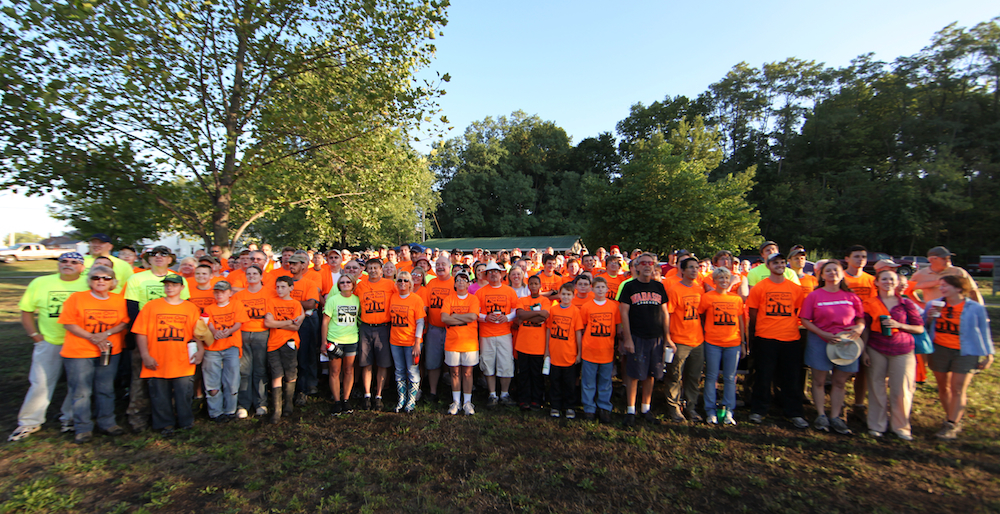On this final night in Cambodia, I adorned my trekking shoes for the first time in weeks and chaperoned an excursion to Phnom Penh's Water Festival near the river. I missed the main events of boating and races during the day, but the locals spoke of crowds that would stop traffic, which I was eager and willing to miss. Instead, I decided to take in the excitement with the older kids by foot in the evening. Evan, Zan (the other volunteer), and I stomped along the mile or two of road in between the orphanage and the riverbank, passing the vehicles alit on the road like we were reenacting Office Space. There was lots of hand holding, and people switched up often to grab my hand or Evan's or their close friend's in front. We were a group stepping in tune with each other and finding joy in being in the others' presences. It was another one of those moments when I was stunned how comfortable I was far away from my home bubble.
The water festival is timed to occur with a full moon, and this moon cast a glow over the city that rivaled the sun. As I write about this evening six months later, I write now knowing every full moon I've seen since reminds me of Cambodia's water festival and the evening amidst the nighttime light.
The streets went from scattered to bustling to impenetrable. We held hands like we were preparing for a round of Crack the Whip, but had we not, we were sure to lose a soul or two.
At one point, I actually had a motorbike advance up the back of my leg, impatient to wait for the hundred or so people standing in his way. I think I tried to give this man a "Hey, pardon me, but you just ran your motor vehicle over my calf" perturbed look but couldn't rotate my body or even head in his direction to make the gaze. I may or may not still have the tire mark on my pants.
We found ourselves within a block of the water but couldn't dare move in that direction for fear of getting our bodies crushed under the pressure of thousands more. Evan and the older boys turned towards the city and led us back the way we had come. Hours of walking got us to the heart of the traffic and nothing more.
We were bummed and opted for rickshaws back to the compound. But such an outing had to include some radical behavior, so we made the way back a ride to remember. I sat with six girls screaming at the top of their lungs to strangers on the road. Easily amused; my kind of people.
The youngins were still up and romping in the near daylight of midnight. I pulled out my camera and let them go to town with their photographic skills. Evan rode a two foot bike around with little girls shrieking in his wake. I sat in constantly shifting human piles of little kids and saw spots from all the camera flashes.
Litho, one of my strongest bonds in Palm Tree, sat cross-legged next to me as I tried to describe where I was going and what I was doing the next day onward. I gave up soon after starting and just focused on laughing at nothing but the sweetness around us. My last hugs were sad as some boys uttered the word "sister" in my direction; it became official, I was returning some day, hopefully soon.
I awoke at roughly 4:30am the next morning to a slowly warming sky and air damp with that morning anticipation I rarely get to witness personally. The cook was already awake and spooning out plates of breakfast, a few girls at her side on their turns to help the kitchen.
I knocked on Evan's door quietly at 5am to say my goodbyes to a guy that will forever be in my mind. I gave him a small sheet of paper with my number, e-mail, and home address, hoping he would be in touch with ground level news of Palm Tree on a regular basis. I also looked forward to a reunion in Chicago upon his return in July of 2009. I handed him my recently completed copy of Shantaram as he exchanged it for Mountains Beyond Mountains.
It was a pleasure to know that kid, and I'm still in shock of his sudden celestial departure. This, of course, was not something I was thinking about while we embraced that final traveler's embrace. I instead was thinking of time's little tricks and wondering when I would next be grasping this same man's shoulders; on what continent, after what amazing accomplishments on both sides have occurred? This bittersweet moment seemed sweet in real time and in hindsight should have been bitter to the last drop.
I found a way to finally get passed the gates of Palm Tree to the street beyond, hopped on a motorbike after an effortless haggle, and zoomed past Thai Chi demonstration after Thai Chi demonstration in the brisk morning air of sunrises. A hand slowly grasped and still continues to hold my arm in the direction of that city and that country; it was a tangible and evocative goodbye to Cambodia.










